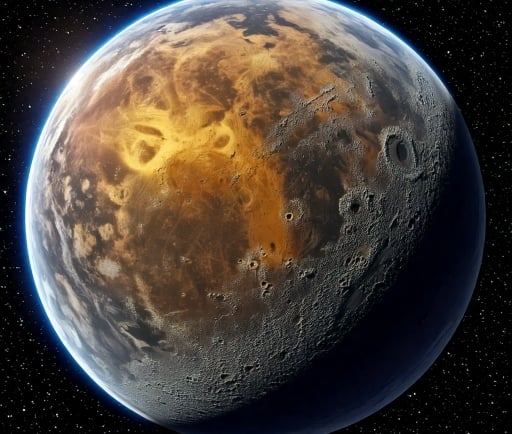The Kapteyn C: A Glimpse into an 11 Billion-Year-Old Planet


Introduction to Kapteyn C
Kapteyn C is a fascinating exoplanet located approximately 13 light-years away in the constellation Pictor. Discovered in 2013, this celestial body is noteworthy for several reasons, one being its extraordinary age of around 11 billion years. This places it as one of the oldest known exoplanets, allowing researchers to gain valuable insights into planetary formation and evolution over an extended timescale.
Characteristics of Kapteyn C
The planet orbits the red dwarf star Kapteyn, which is itself older than the Sun, contributing to the unique characteristics of Kapteyn C. This planet has a mass about four times that of Earth, positioning it within the 'super-Earth' category. It orbits within the habitable zone of its star, suggesting the potential for sustaining liquid water on its surface—a critical factor for the possibility of life.
Kapteyn C's atmosphere is yet to be confirmed, but studies suggest it may have the necessary conditions to support a diverse range of chemical interactions. The prolonged existence of this planet within its star's habitable zone raises intriguing questions regarding its geological and atmospheric history, particularly considering its age.
Significance of Kapteyn C in Exoplanetary Research
The discovery of Kapteyn C provides important implications for our understanding of planetary systems and their development throughout the cosmos. As one of the oldest known planets, it serves as a prime candidate for studying the long-term stability of celestial bodies, especially regarding the environmental factors that allow for the persistence of a habitable zone.
Researchers are particularly interested in how Kapteyn C has developed over its 11 billion years. The knowledge gained from studying this ancient world may inform us about the evolution of similar planets, including those in our own solar system.
Moreover, Kapteyn C's proximity presents an excellent opportunity for future observations. Both ground-based and space telescope technologies are being developed to enhance our understanding of exoplanet atmospheres, which could yield signs of habitability or even life.
Conclusion
Understanding the Kapteyn C, an 11 billion-year-old planet, offers invaluable perspectives on the workings of planetary systems and the possibility of life beyond Earth. As we continue to explore the cosmos with advanced technology, discoveries like these pave the way for unraveling the mysteries behind ancient extraterrestrial bodies. The potential findings from future studies of Kapteyn C could significantly enhance our comprehension of the universe and the many worlds it harbors.
